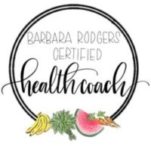You may have noticed when you are out grocery shopping, that some processed foods are fortified with certain vitamins and minerals. But why is that and is fortification good for you? That is a good question. Let’s start by by defining food fortification.
“Food fortification is a process where nutrients are added to a food product where it did not actually occur.¹ Some examples of fortification include adding vitamin D to milk, calcium to orange juice or adding omega-3 fatty acids to eggs.

“Fortification is a common practice and is supported by both the World Health Organization (WHO) and the Food Agricultural Organization of the United Nations. It is not a bad thing and is used to intentionally increase the essential micronutrients in foods whether they were originally there before processing or not.”²

In my new book, Wholey Cow A Simple Guide To Eating And Living, which is available on Amazon, I talk a little bit about food fortification and what to look for when buying packaged foods.

Many consumers these days get confused while out shopping because there are so many products to choose from. Many products also contain various packaging claims that often promote one or two nutrients in the product, such as iron or calcium. While getting extra iron or calcium can be good for your diet, eating added sugar, hydrogenated oil, and other chemicals or preservatives is not. That is why it is so important to read those food labels. If there are a bunch of other ingredients listed, many of which you can’t pronounce, you are probably better off finding some other food choice.
Remember—a diet rich in whole foods is the best source of nutrients for your body. Make sure you choose wisely.

Thanks for reading!
Barb
Source:
¹”Food Fortification.” Wikipedia. Wikimedia Foundation, 07 May 2017. Web. 11 May 2017.
²Wholey Cow A Simple Guide To Eating And Living. N.p.: Barbara Rodgers, n.d. 26. Print.










